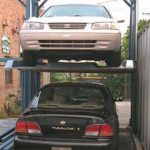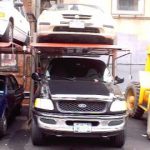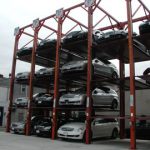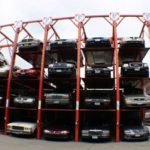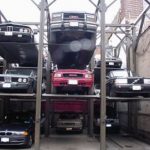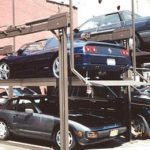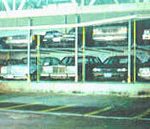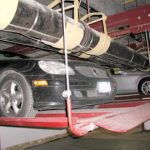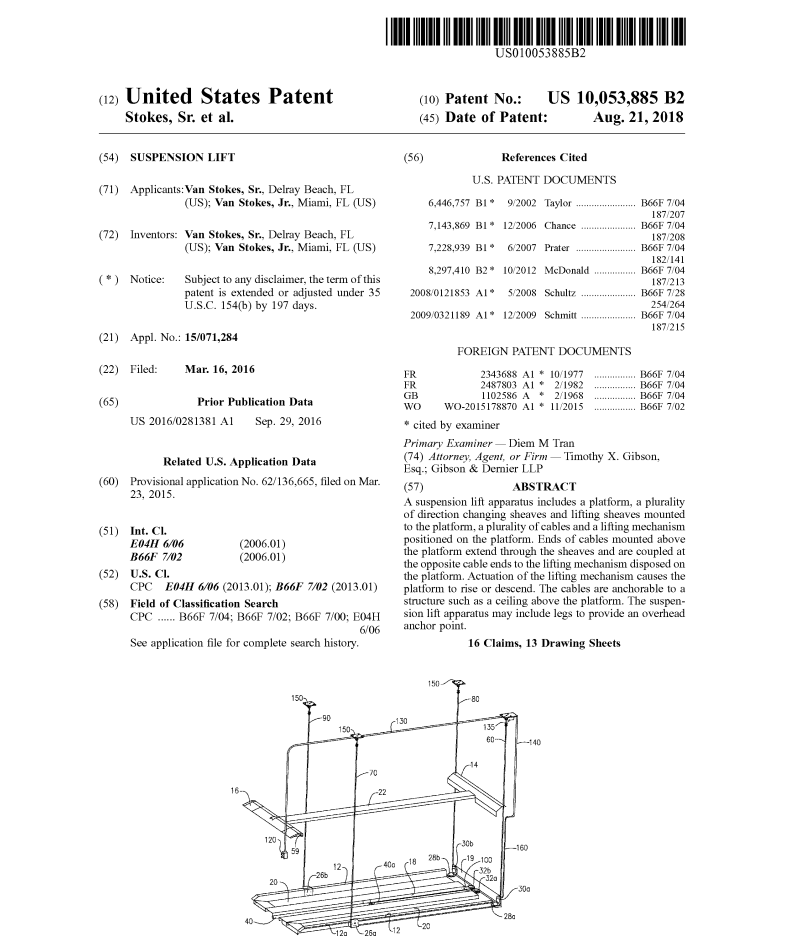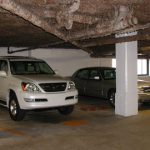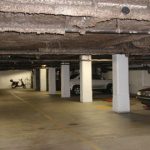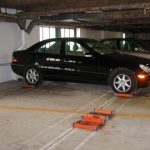Overview
These systems park vehicles vertically, one over the top of the other. An operator (usually the Valet or Parking Attendant) is required to relocate the ground vehicle prior to lowering the vehicle above it. This is exactly the same as parking vehicles on the ground bumper-to-bumper.
Someone must relocate the vehicles at the front of the row to access the vehicle at the back of the row. In the case of parking lots or garages the attendants who collects the money will shuffle the vehicles. In many cases, like with condominiums, the parking attendants, who move the cars, double as security personnel.
These are the least expensive mechanical parking machines and can be quickly set up and used with little or no foundation work. Most of the two high units can be installed on asphalt while the higher units will need a simple concrete slab or footing. These units are bolt-in-place and can be easily disassembled and relocated.
There are many different types of mechanical parking systems. Getting the right system for a particular application and a specific area requires an understanding of what the different systems are capable of doing. This is why we highly recommend retaining Stokes Industries as your mechanical parking consultant so that you may receive the best advice and product recommendations for your project.
Cantilever
This is a valet type parking lift. It is called a Cantilever because the platform is lifted near the rear and most of the load is cantilever’ed forward of the lifting legs. This is done so there is room to open the doors. It is generally built in a 2-High configuration although it is sometimes seen as a 3-High. Used indoors or outdoors, it can be installed on asphalt but works better if installed on concrete. Care must be taken to mount these on a reasonably level surface. The units come in various sizes and configurations. Some models are capable of parking SUVs . Most units are manufactured in a common leg configuration which means that each unit only has one leg and it is shared by the unit next to it. This type of unit is installed in straight rows . Other units come with individual legs so they can be installed independently but usually consume much more space.
Stokes Industries holds patents for cantilever lifts.
Four Post
This unit is a very efficient and inexpensive mechanical parking system. These units can be 2-High, 3-High, 4-High or, 5-High and are installed on concrete. Some of these units have automatic up and down features. One big advantage of the 4-Post unit is that the vehicle doors can be opened without fear of hitting the equipment.
Stokes Industries holds patents for four-post lifts.
No-Post / Suspension Lift
This is a valet type parking machine. It is called a No-Post because it has no “posts” (legs). It is normally mounted to a support structure that is either free standing or attached to the building. This system parks additional vehicles without increasing the floor loading. The support structure distributes the increased load directly to the building columns and foundation.
The No-Post is generally installed indoors in a 2-High configuration. If there is sufficient clearance the unit can be installed as a 3-High system. These units can be installed in very unusual places. They allow you to park cars in places that are usually inaccessible to other types of equipment. Under very tight conditions other types of parking systems may cause you to lose a parking space because of the posts (legs). You will not loose any parking spaces with the No-Post system.
Stokes Industries holds patents for no-post lifts.
Side Slide
The manual side slide is the least expensive mechanical parking device. It is used where the columns in a garage block parking spaces. The vehicles are driven onto slides and then they are pushed, by the attendants, behind the building columns. Another version of this system, a bit more complicated and expensive, is the automatic slide where vehicles are driven onto platforms and the platforms are moved to the side by electric motors.
Single-Post
This unit is a variation of the cantilever. It uses a single post to lift a platform. It must be bolted to a concrete floor for stability. It is used in situations where the second post would be inconvenient. It can be used as part of a large systems or as a single unit

Twin-Post
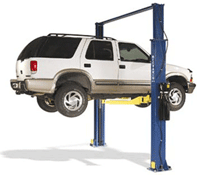
This is a variation of the automobile service lift. The posts are generally very wide and located in a position inconvenient for opening the vehicle doors and therefore it is seldom deployed.




